After crossing some of the most remote and harsh landscapes of this trip, traveling only on dirt roads and dry camping for weeks at altitudes above 13,000 feet, we crossed from the dusty, washboard roads of Bolivia onto the perfect paved roads of Chile. It was crazy. Suddenly there were signs telling you where you were, guard rails and paved shoulders on the side of the road. Drivers obeyed traffic laws. It was like we suddenly were transported back into the United States. Sam was rejoicing the perfect roads, but I was feeling a bit sad. It seemed like the most challenging parts of the trip were behind us. Was the adventure over?
From the southwest circuit in Bolivia the road goes to San Pedro de Atacama, Chile. This town is at around 6000 feet (the border we crossed is at over 15,000 ) so the road to it, which I think was only around a 45 minute drive, was straight down. We had to stop for 15 minutes because our breaks were overheating so bad (the first time on this trip it happened). Talk about plunging yourself into a new reality.
Once we found our campsite which we desperately needed for showers, a water tank fill and wifi (costing a crazy $30 US, welcome to Chile!!!!!) I got out and jumped around, breathing in the sweet, sweet oxygen. This was the lowest altitude we had been at in months and I felt like I could run a marathon.
The town of San Pedro de Atacama was cute I guess, it kind of felt like a small Santa Fe, New Mexico with its adobe buildings and abundance of tourist focused craft shops and bars. As we were walking around town we suddenly saw Brian and Michelle our motorcycling friends who also randomly just arrived in town. The four of us went to an outdoor restaurant with a charming courtyard where they had a blues band playing. I ordered a glass of crisp, delicious Chilean sauvignon blanc (my first good wine in ages) that was cheaper than a Coke and a fancy cheese platter, looked around at all the hip couples eating artisan pizzas and drinking craft beers and suddenly felt like I was back in California.
I started feeling a bit of culture shock. Things felt so familiar but I was not sure I wanted to be feeling this “comfortable” yet. I thought that would happen back in the US, but suddenly I realized that Chile was going to a very easy country to travel through. It put me in a bit of a funk, so I ordered another glass of wine to lift my spirits. =)
Michelle told us that our Swiss friends had also just arrived in town, all four of them, so suddenly a huge group of us was meeting up for dinner later to swap stories (which turned out to be hours of us all talking about the shitty roads and crazy cold weather of Bolivia). I was super happy to be back with everyone, but also a bit depressed. For the first time on the trip, I started thinking about it ending. This funk would haunt me for a few weeks while I started processing the idea of going home.
On top of my crummy mood, we desperately needed new tires, so instead of being able to explore the Atacama desert to get me out of my sad little state, we spent five miserable days driving over 500 miles through three Chilean mining towns in search of tires that would fit our truck with the proper load capacity, paying almost double what they would be in the US. It was so tiresome I don’t even want to tell the story (maybe Sam will later). Let me just say, car repairs are the most challenging part of overlanding for us (thank goodness we have had so few!).
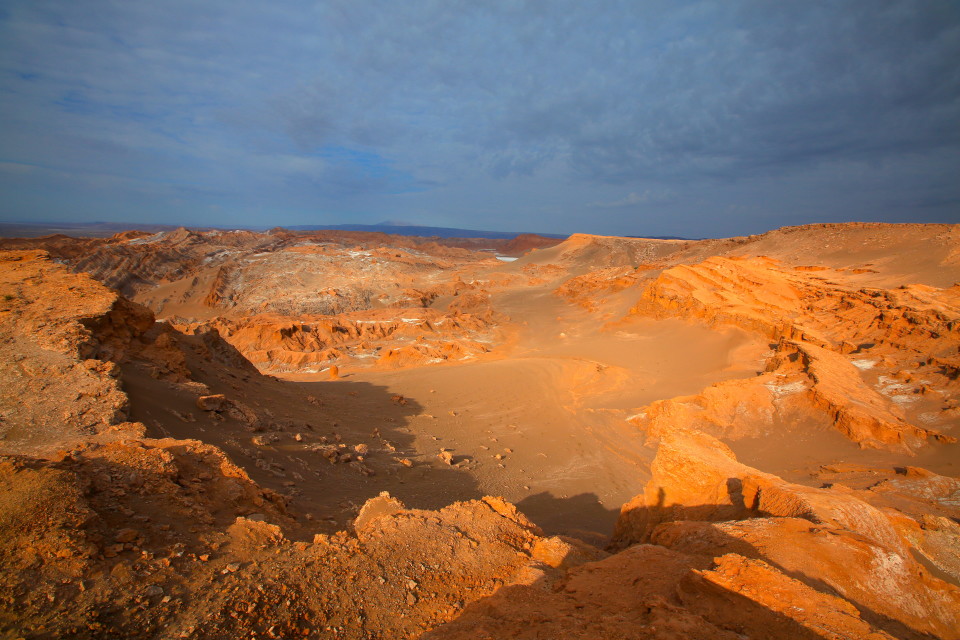
Near San Perdro de Atacama is The Valley of the Moon. Kind of looked like a poor mans Bryce Canyon. We drove through this on our quest for tires.
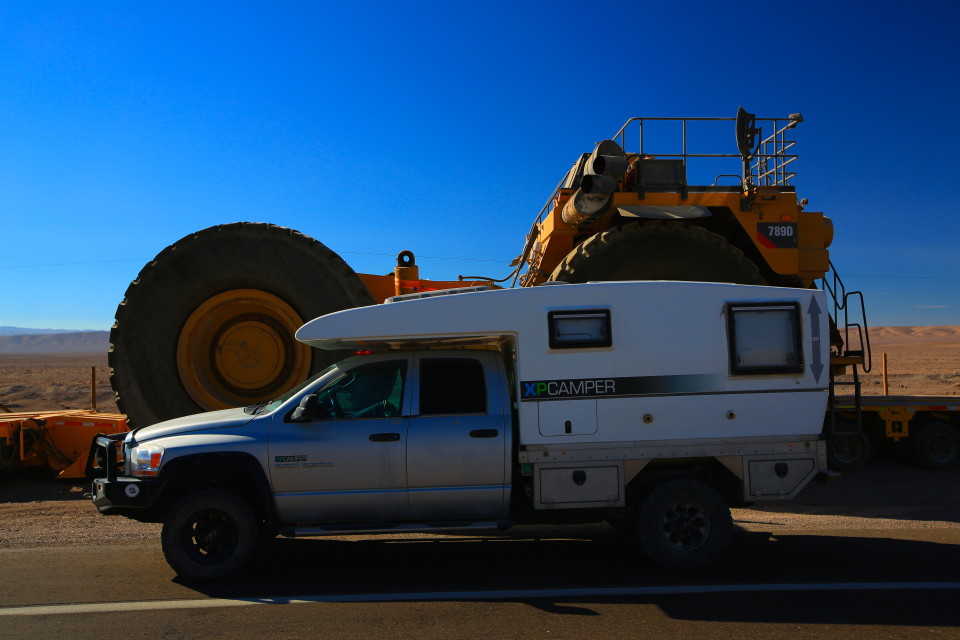
As we were driving through the Atacama desert, we saw this tractor and pulled over to take a picture. The tires were so huge they made us laugh after desperately trying to find tires that would work for the Dodge.
While we had to travel all over Northern Chile to look for tires, I will say that we really enjoyed our nights in the Atacama desert. Northern Chile has some of the largest copper mines in the world, and so the cities in the desert had lots of places to get industrial truck parts. However, other than the mines, the Atacama is the driest place on the planet and is totally desolate outside the coastal cities.
While we were looking for tires, at night we would drive into the desert following tracks into the dunes to wild camp. It was some of our favorite camp spots of the trip for the absolute silence, cool desert breezes and total darkness. And the stars! We watched giant falling stars blaze across the sky through our skylight over our bed as we drifted off to sleep. So many stars……
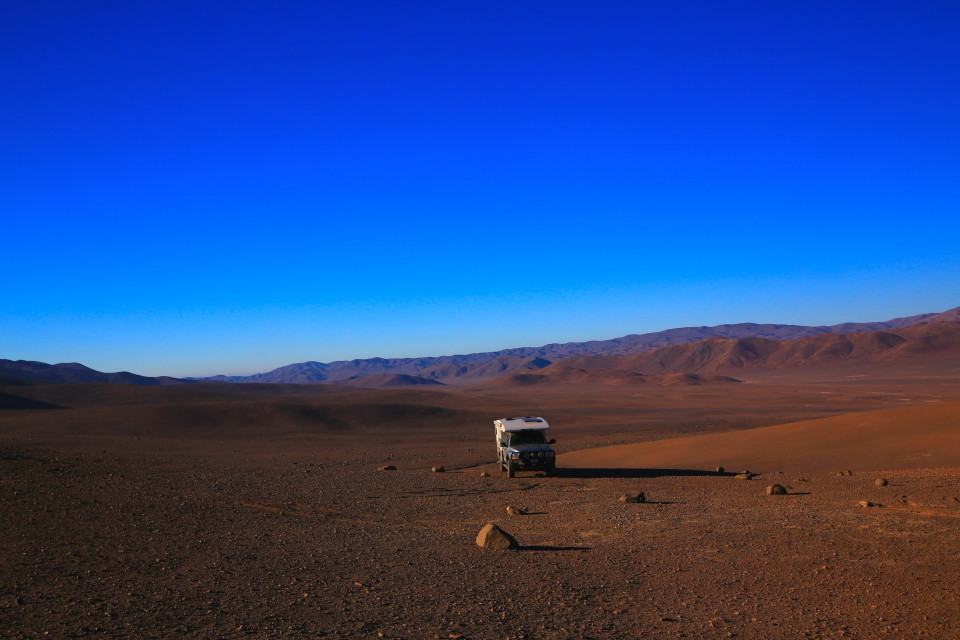
This is the type of place we would camp at. We would drive until we were alone in the dunes. We both really loved the vast loneliness of it. A place where you can still get lost.
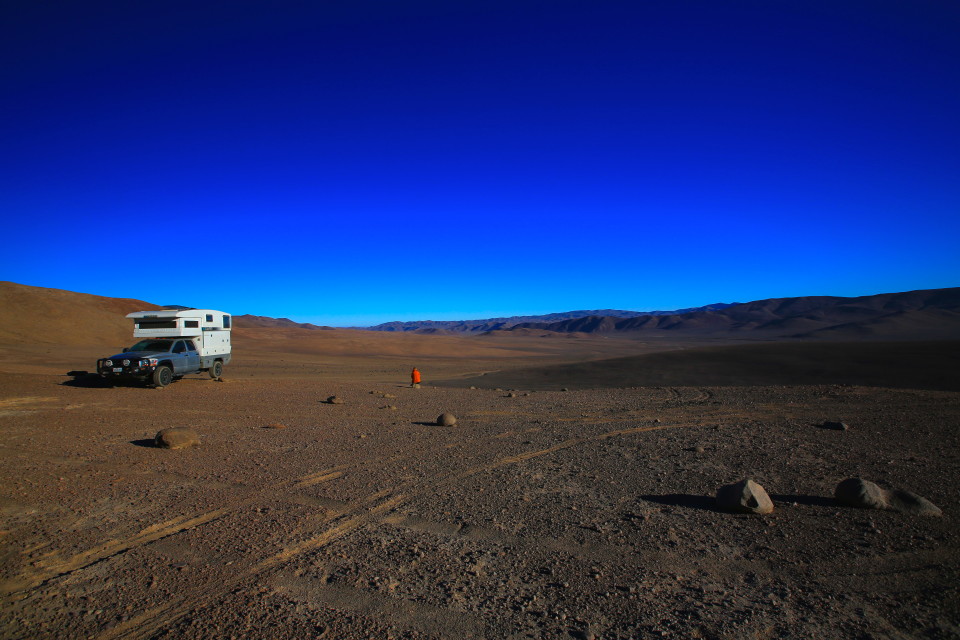
This is me at a camp spot in the Atacama. I am looking out over a huge valley up on a hill. It just went on and on……
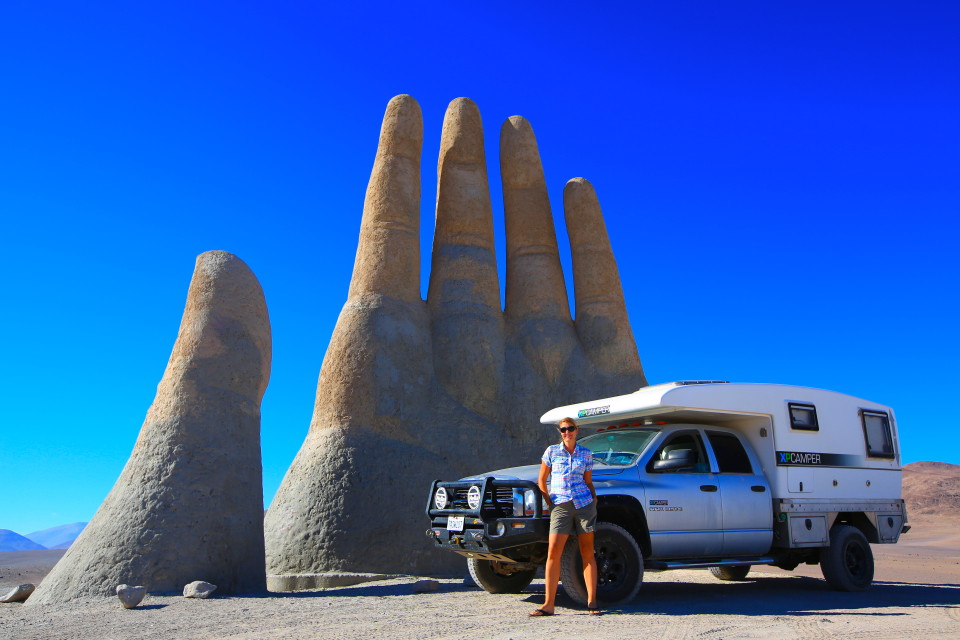
In the middle of the Atacama, an artist created this hand that looks like it is reaching out of the sand. It is called Mano del deserto. There is also another hand coming out of the sand on a beach in Uruguay.
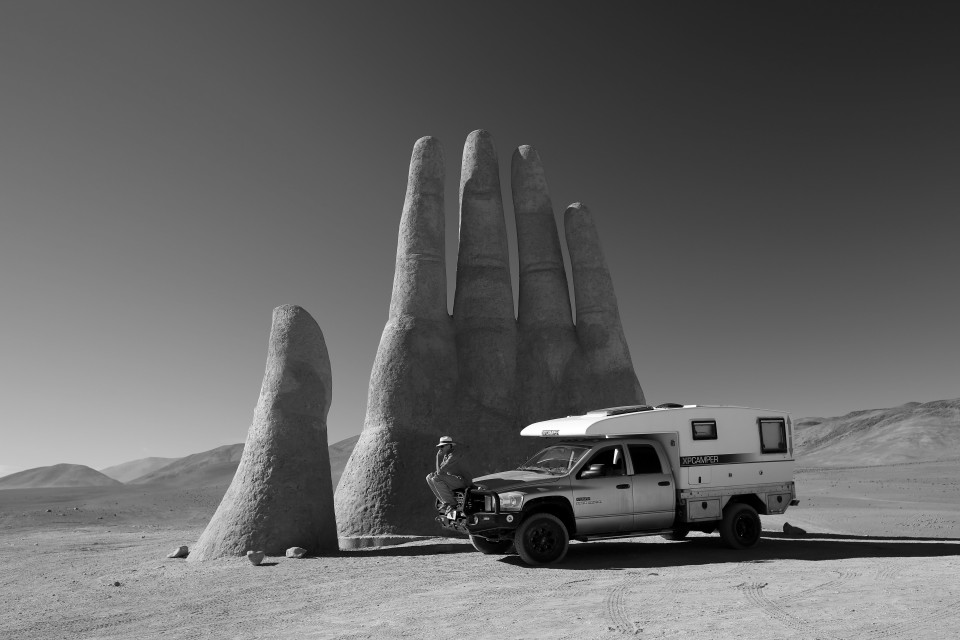
Since Sam got his Panama hat, I think he feels he needs to strike more dignified poses. This one just cracked me up so I made it black and white to give it mood.
To break up days of driving through nothing but desert we veered off to the coast to visit a small national park called Pan de Azucar to see Humboldt penguins. This park is supposed to have some of the most stunning coastal desert scenery in Northern Chile. We spent two days here almost totally alone, but were a bit unlucky with the weather. It was super grey and overcast, very similar to Northern California. In fact, the entire coast of Chile feels like California with its cold Pacific water and rugged cliffs. The park was pretty, but it is known for the colored sands on the dunes, and without sun everything was a bit monochromatic.
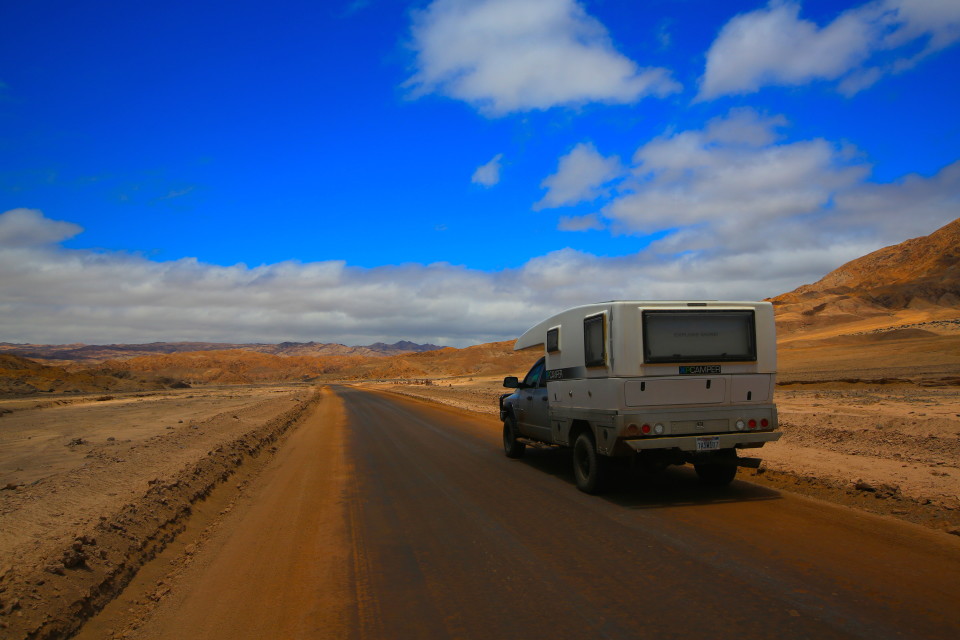
Driving into the park we finally started to see cactus and other signs of plant life which was not in other parts of the Atacama.
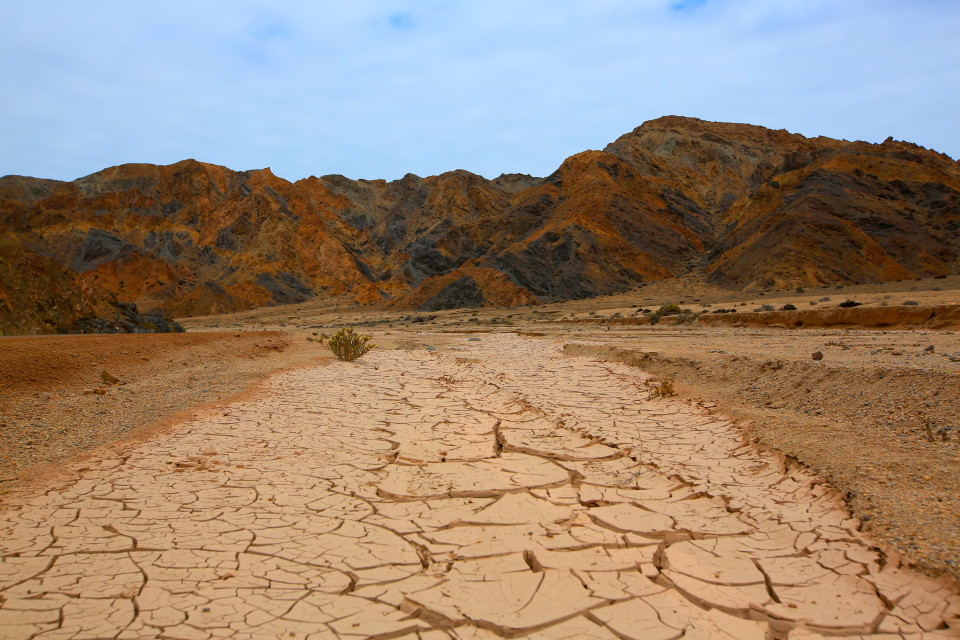
While the Atacama is super dry, the moisture from the sea felt amazing. It was so great to be back at sea level and my skin was finally not painfully dry.

Giant sea lions hung out in the fish abundant waters off the coast. The cold Humboldt currents (which the penguins are named after) that flow through Peru and Ecuador also always seem to bring some of the most animal filled seas we have seen on this trip.
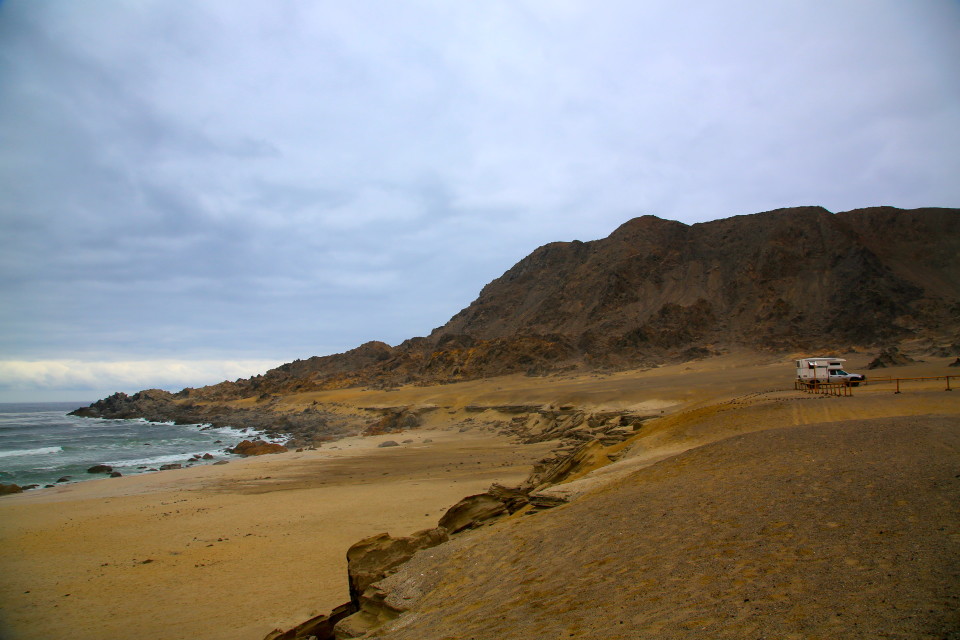
Camping alone on the beach. Free camping in Chile is so easy and so plentiful. It has been our favorite country to free camp in since Costa Rica.
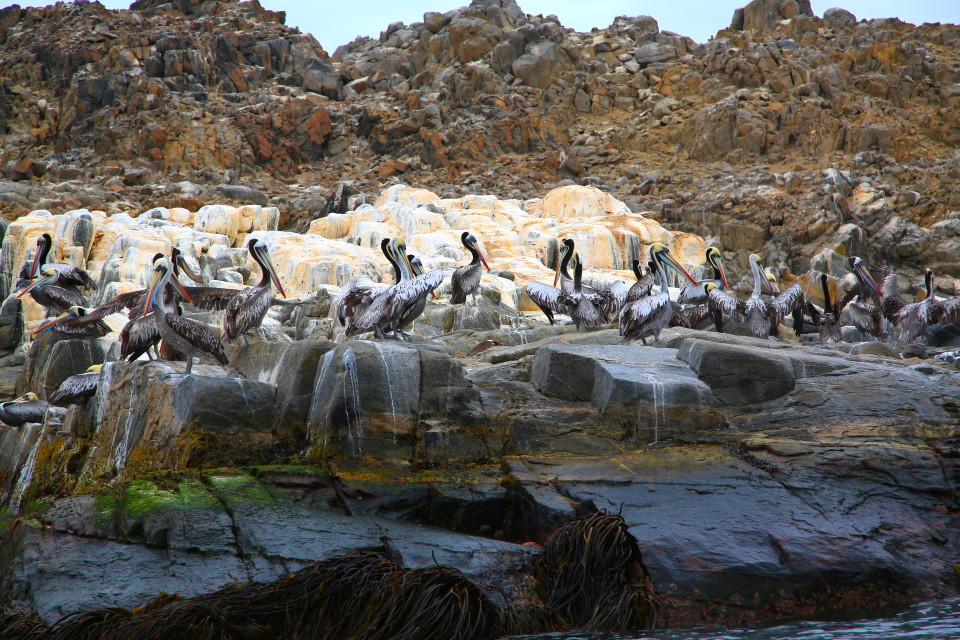
The pelicans had such colorful beaks, it made the them seem so much more exotic than the pelicans we have in California.
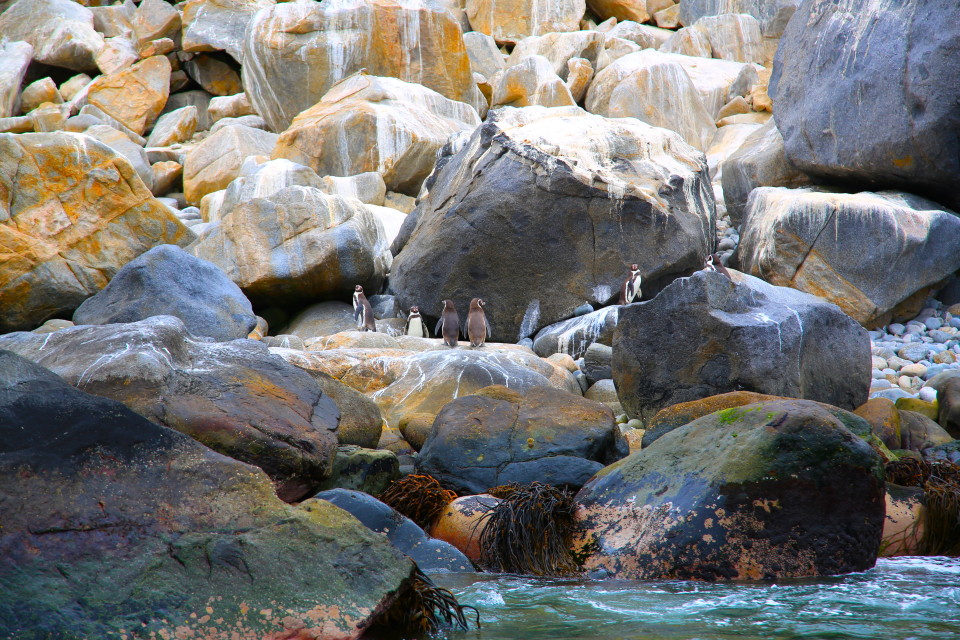
We did not put the right lens on the camera (my fault) so the penguins look a bit small. They were actually much bigger in person. I liked this picture because it looks like two of them are holding hands.
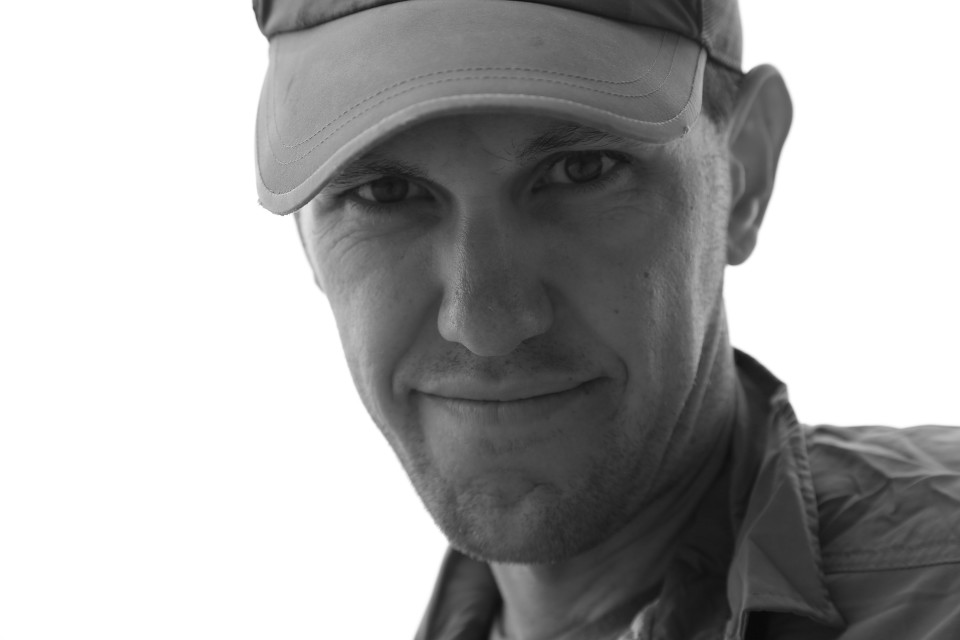
Sam told me to take some pictures of penguins while on the boat, so I turned the camera on him and snapped this one picture. And then lost camera privileges (which was my master plan) =).
While we were waiting for the penguin boat we met some French overlanders. The man was very interested in the XP and asked for us to pop up so he could take a tour. An hour later we were full of unsolicited advice about what he would do differently and also things he really liked. But mostly we heard about how he would never drive an American vehicle so huge and unreliable (we have had almost zero problems with our truck on this trip FYI, ZERO, and we beat the hell out of it!).
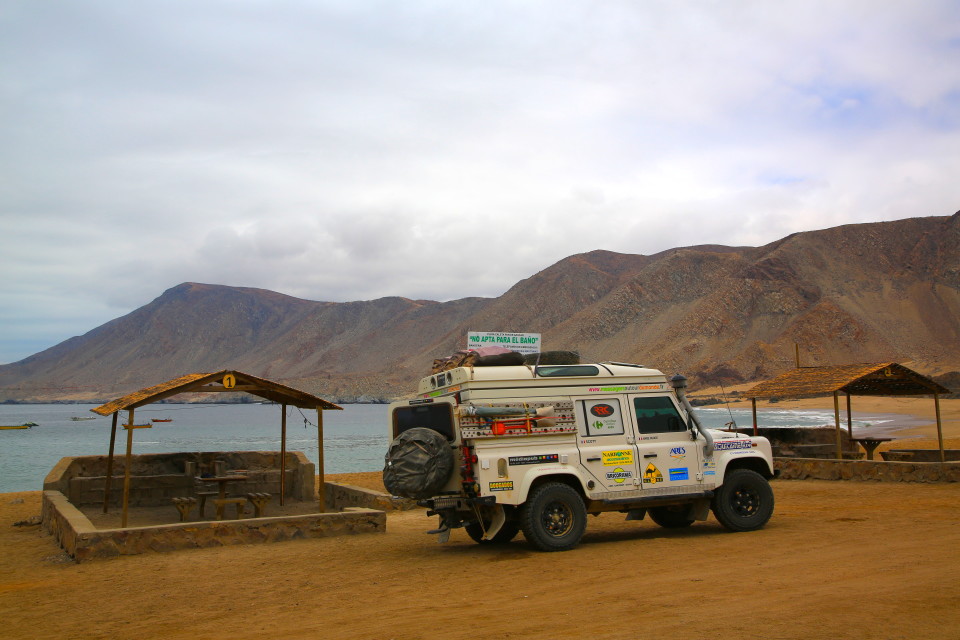
I should have asked them how the dust that covers every inch of a Defender while they off road was treating them….But I rose above it all and smiled and said yes we Americans love our giant trucks.
He was actually a nice guy, but it always cracks us up when this happens. I would never go into someones rig and criticize it, I just assume everyone has what their budget and lifestyle affords them. The one thing that does annoy me is when people tell us things with certainty about the XP that we will have problems with, like our Webasto stove will have problems at altitude, when we just used it for weeks at 14,000 feet and it worked perfectly. But I have learned that trying to argue with “overlander experts” is futile, so instead we just laugh about stuff later as we are 4x4ing with our new tires in our massive, beefy, badass American truck. =)













